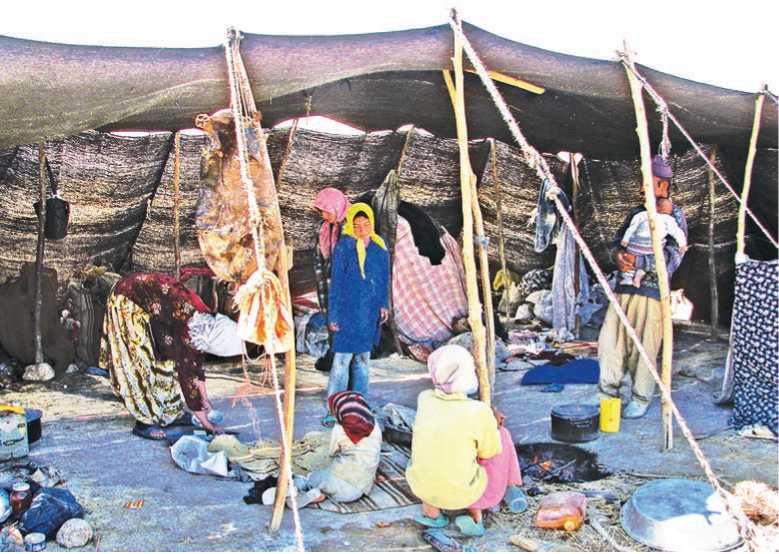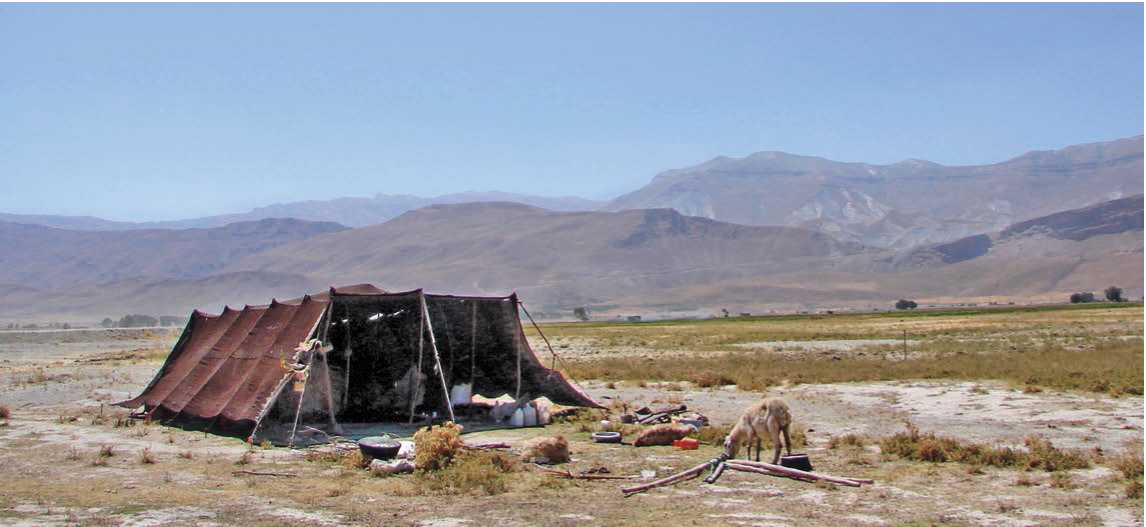Figure 8.25: Luri nomads, near Isfahan, Iran. Source: © Named Saber (Http://creativecommons. org/ licenses/by/2.0/deed. en)

Despite the emphasis on the development of agriculture, this time also saw the emergence of nonagricultural herding societies, who tended flocks of sheep and goats. Although sheep and goats were already domesticated around 8000 bce, the earliest evidence archaeologically of a sheep-tending campsite in Iran dates back to around 6200 bce.20 The scale of the rectangular shape of the foundation stones at these ancient sites is remarkably similar to the rectangular tents made of black goatskin, which are still produced today by the Luri nomads of Iran. Their tent is made of goat hair rather than goat skin. The natural
Oiliness of goat hair sheds rainwater and makes the tents practically waterproof. The Bedouin call the tent beit sha’r, meaning “house of hair.” The tent is stretched by means of ropes made of wool and hemp and then pitched so that the lower edge does not touch the ground. Usually strips of woven cloth are added to the middle of the tent so that the older parts are always at the bottom. In this way the tent never has to be rebuilt from scratch but is self-renewing. A new tent is only made with the start of a new family, and as long as that family inhabits it, the tent is maintained and added to (Figures 8.25, 8.26).
Figure 8.26: Luri nomads, near Isfahan, Iran. Source: © Hamed Saber (Http://creative-commons. org/licenses/by/2.0/deed. en)

The Luri, like most nomads, live not so much in the tent as in the desert. Most of the day is spent outdoors, whether herding or preparing food. Clothing is often more vital to survival than shelter. The tent is used for sleeping, receiving and entertaining guests, and by the women to cook and weave. The interior, though open, is divided into different usage zones for cooking, sleeping, and the storage of goods. During the winter, the fireplaces are built up inside and the opening is directed toward the south, while in summer the tent is directed to the north. The tents of today feature a spatial configuration that incorporates a qata or “dividing” curtain between male and female domains, as dictated by Islam. Whether these existed in ancient times is not known. Campsites can take on different constellations but often are located overlooking the pasture at the base of a hill. A common pattern is a row or a spread-out cluster of tents.
As was usual in early societies and among rural areas even today, the work domains are strictly divided into male and female responsibilities. Though the tent is usually owned by the husband, it is controlled by the women, who do the physical work of pitching the tents, cooking, carrying water, spinning, and weaving. The men are responsible for the safety and security of the social units, for planning and executing raids, for protecting the herds, for providing hunted meat, and for directing the movement of the camps.21




 World History
World History









